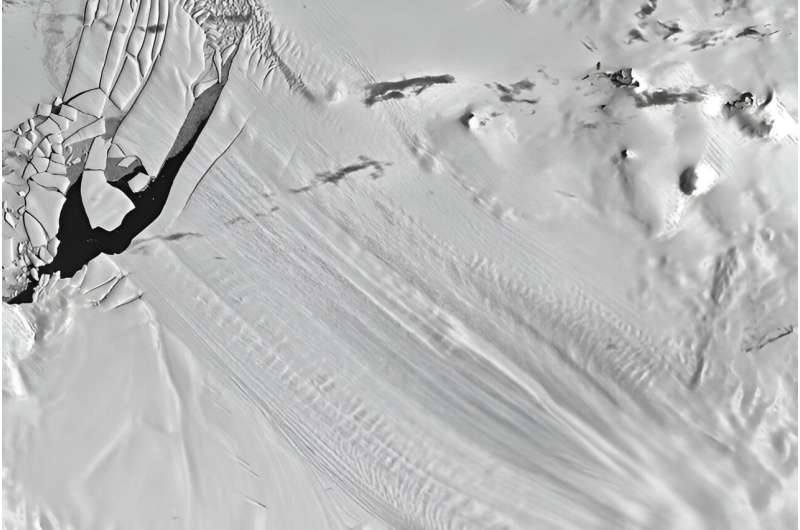
Undersea anchors of ice that help prevent Antarctica’s land ice from slipping into the ocean are shrinking at more than twice the rate compared with 50 years ago, research shows.
More than a third of these frozen moorings, known as pinning points, have decreased in size since the turn of the century, experts say.
Further deterioration of pinning points, which hold in place the floating ice sheets that fortify Antarctica’s land ice, would accelerate the continent’s contribution to rising sea levels, scientists warn. The paper is published in Nature.
First study
Floating ice sheets fringe 75% of Antarctica’s coastline and cover an area equivalent to the size of Greenland.
The findings are part of the first-ever study of changes in the thickness of Antarctic ice shelves—extensions of land ice that float on the ocean—stretching back to 1973. Previous observations only date from 1992.
Researchers from the University of Edinburgh used satellite imagery from the NASA/United States Geographical Survey (USGS) Landsat program’s 50-year-old archive to track variations in the appearances of pinning points on the ice’s surface.
Pinning points form when part of a floating ice sheet anchors itself to an elevation on the ocean floor, creating a visible bump on the otherwise smooth ice shelf surface.
-
Pine Island Glacier’s ice shelf in 2001. Pinning points are mostly smooth indicating that the floating ice has lost contact with high points on the seafloor. Credit: University of Edinburgh
-
Pine Island Glacier’s ice shelf in 2024. The thinning shelf has lost ice along its front and northern margin and fractured ice is visible along the southern edge. Credit: University of Edinburgh
Ice shelves
Using changes in pinning points as a reliable proxy for variations in the thickness of ice shelves, the team measured changes in these features during three periods: from 1973 to 1989, 1990 to 2000 and from 2000 to 2022.
The scientists found that only 15% of pinning points reduced in size from 1973 to 1989, leading to small localized pockets of thinning ice shelves.
However, a widespread acceleration and unanchoring of ice shelves from pinning points began in the 1990s in the western Antarctic Peninsula and the Amundsen Sea.
The number of pinning points that shrank increased to 25% from 1990 to 2000 and 37% from 2000 to 2022.
“The switch over the past 50 years from relatively limited and regionally concentrated ice shelf melt, to much more widespread unanchoring, is striking. The ongoing concern is how many more of these vitally important pinning points will begin to melt away in the coming 50 years,” says Dr. Bertie Miles.
“What we are seeing around Antarctica is a sustained attack by climate warming to the buttresses, that slow the conversion of ice melting, into global sea-level rise. This reinforces the need for us to take action where we can to reduce global carbon emissions,” says Professor Robert Bingham.
More information:
Bertie W. J. Miles et al, Progressive unanchoring of Antarctic ice shelves since 1973, Nature (2024). DOI: 10.1038/s41586-024-07049-0
Journal information:
Nature
Provided by
University of Edinburgh
Ice melt barriers disappearing at twice the rate compared to 50 years ago, study finds (2024, February 23)
retrieved 24 February 2024
from https://phys.org/news/2024-02-ice-barriers-years.html
part may be reproduced without the written permission. The content is provided for information purposes only.